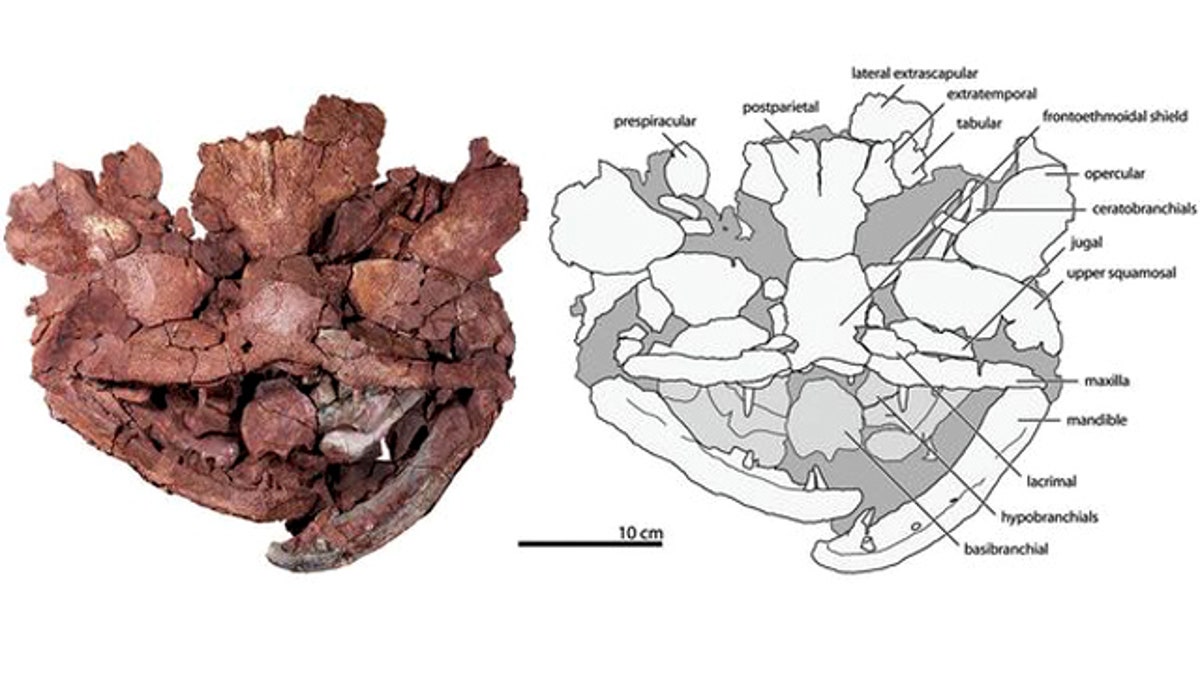
A photograph and line drawing of the skull of Laccognathus embryi, a new species of predatory fish from the Devonian Period. Note the wide head, large mouth and small area for the eyes. (Ted Daeschler/ANSP (image), K. Monoyios (illustration))
My, what big teeth you had!
Research scientists have discovered a new species of predatory fish with a powerful bite that prowled ancient North American waterways around 375 million years ago.
They have named their discovery Laccognathus embryi (lack-ugg-NAY'- thus EM'-bree-eye). It had a wide head, small eyes and large sharp teeth and probably grew up to 6 feet long.
"I wouldn't want to be wading or swimming in waters where this animal lurked," said Edward Daeschler, the Academy of Natural Science's curator of vertebrate zoology. He and colleagues from University of Chicago and Harvard University described the new denizen of the Devonian period they named Laccognathus embryi in the current issue of the Journal of Vertebrate Paleontology.
That time period was a horrible one for swimmers, Daeshcler said.
"Clearly these Late Devonian ecosystems were vicious places, and Laccognathus filled the niche of a large, bottom-dwelling, sit-and-wait predator with a powerful bite."
The researchers are the same team who gained worldwide acclaim several years ago for their discovery of a species considered a link between fish and the earliest limbed animals. The latest discovery comes from the same area, on Ellesmere Island in the Canadian Arctic.
The Devonian Period (415 to 360 million years ago) is often described as the Age of Fishes because of the rich variety of aquatic forms that populated the ancient seas, lagoons and streams, the researchers said.
The Associated Press contributed to this report.




















